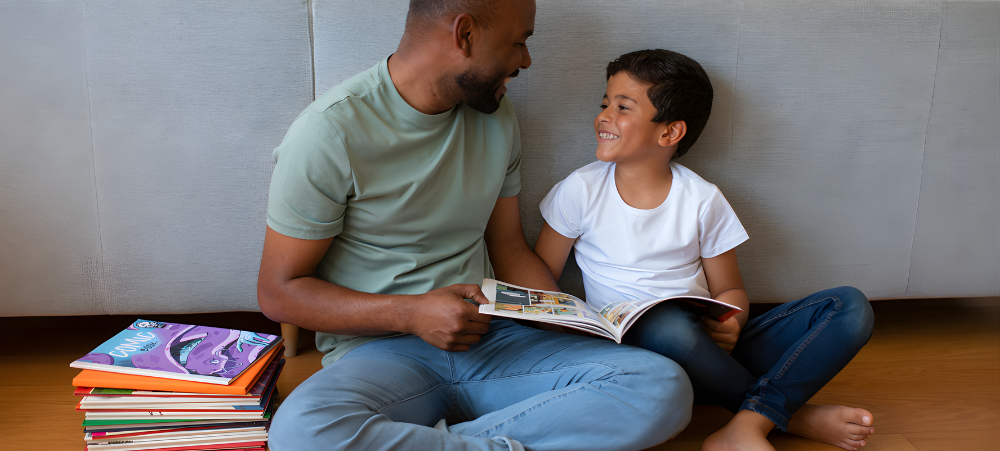It is normal for children to be afraid of the dark at some stage or another. Preschoolers aren’t always able to distinguish between reality and fantasy. Couple this with very active imaginations and it becomes easy for them to believe monsters are under the bed or in the cupboards, waiting to pounce once the lights go out.
“There are also fewer distractions to keep a child’s mind occupied at night,” says Dobbins, who is also an assistant professor of paediatrics and child psychiatry at Southern Illinois University. “So instead, his imagination runs wild, and as a result, a child who seems well adjusted during the day may be more vulnerable at night.”
When it comes to fear of the dark, television is one of the biggest culprits. Often parents don’t realise how negatively T.V. can affect their children. Gaming is probably the second biggest culprit. Both activities are extremely stimulating and may contain inappropriate content for little children.
A lot of parents don’t limit what their children watch on T.V., or even know what games they are playing on their tablets or gaming devices. The images can be menacing and trigger already active imaginations, stirring up all sorts of ideas that can come back to haunt a child who is lying alone in the dark.
Over protective or an overly anxious parent can also contribute to a child feeling scared or anxious at night time. If not addressed, a child’s fear of the dark may continue to disturb their night time routine.
HOW TO HELP:
Identify the fear
Try and identify the fear by listening to your child. Encourage your child to tell you what makes him or her scared at bedtime. Don’t belittle or trivialise your child’s fears, they are very real to them.
Empower your child
Allow your child to talk about his or her bedtime fears and experiences during the day. Try and find ways to deal with these fears, or cope with them that may help your child feel less frightened at night. Empower your child to deal with a fear of the dark by asking him or her if she wants dad to check on her at night. Let the child decide on the timeframe; every 5, 10 or 15 minutes.
Keep bedtime routine comforting
Half an hour to an hour before bedtime, don’t allow any TV, gaming, potentially scary stories or activities that will over stimulate your child. Rather do something relaxing, like spending some one-on-one time with your child.
Use nightlights and security objects
To create a sense of security, use a night light or a fluffy toy/blanket that your child can snuggle with.
Monsters don’t exist
Don’t tell your child you will scare the monster away, as this is buying into the believe monsters are real. Gently but firmly remind your child monsters do not exist.
Be mindful of other stress factors
Find out if their fear of the dark comes from other worries. For example, some children may be afraid of their parents separating or dying, and this anxiety gets worse when they are alone in the dark. Other stressful issues like the birth of a sibling, death of a pet, moving house or divorce can appear at night as a fear of the dark. If this is the case, Play Therapy may be the best solution.
Professional help
If your child’s fear interferes with his daily functioning and well being professional help may be the best option. They can help you and your child to learn coping strategies to deal with the anxiety.
Always be supportive, encourage communication, take their fears seriously and let them confront their fears at their own pace.
Sources:
- The Cleveland Clinic Foundation
- www.WebMD.com
- www.Betterhealth.vic.gov.au
Written By: Sarah Harvey (Principal of Trinityhouse Northriding)
We understand that there are many aspects that encompass a Mother, Father or Child and strive toward providing resources and services that accommodates this.
Our content is aimed to inform and educate families on issues starting from pregnancy through to the challenges of the teen-age years.
- Tips for Breastfeeding in Public: Confidence and Comfort - November 20, 2025
- Eskort launches Kiddos: South Africa’s first pork range made just for kids - November 13, 2025
- Putting the Power of Learning in Learners’ Hands During Global Education Week - November 12, 2025





